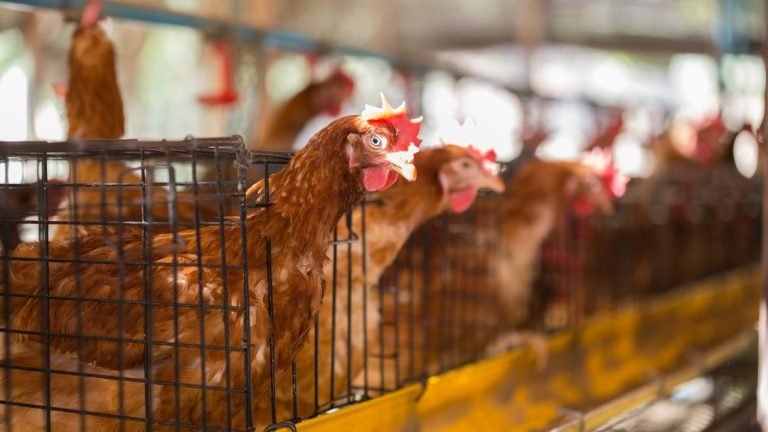Eggs are packed with lots of nutrients. It is an excellent source of protein. Eating the right amount of eggs on a daily basis gives you energy and health benefits. But there is confusion and fear among the people about fertile and non-fertile eggs. Especially about fertile eggs, people fear seeing a chick while breaking eggs.
But there is a specific distinction between fertile and infertile eggs. In this article, I will cover everything about fertile and infertile eggs. So, without further ado, let’s get started.
What do fertile and non-fertile eggs mean?
In easy terms, fertile eggs refer to those eggs that can produce chicks. When a rooster mates with a hen, eggs become fertile. By mating, the rooster’s sperm goes into the hen’s oviduct and fertilizes the egg yolk. In a proper atmosphere, the fertilized egg develops and produces chicks. Most of the eggs in the grocery stores are not fertile. They are produced without a rooster. To lay an egg, hens need only light.
On the other hand, non-fertile or infertile eggs can never produce chicks. Only hens produce sterile eggs. There is no rooster to take part in the process. So, without the sperm, the egg is not fertilized. Grocery stores sell infertile eggs. The whole mating and fertilization process is absent in a non-fertile egg.
Fertile eggs vs. non-fertile eggs
Fertile and non-fertile eggs look identical from the outside. No one can tell the difference between fertile and infertile eggs by only looks. Even there is no difference in nutritional value and taste. You can differentiate it by only the blastoderm and by the size of the germinal spot while you crack open the egg.
When you crack it open for a fertile egg, you will have a small white dot in the yolk. In biological terms, it is called blastodisc. The small white dot will be tight and packed. There will be a small bull’s eye-like ring around the dot. It is called blastoderm. For a fertile egg, the germinal spot will be larger than the non-fertile one. Also, it will look almost like a circle.
On the other side, the infertile eggs also have a germinal spot. But it is smaller compared to the fertile one. In addition, it stays above the center of the yolk. It is just a solid white spot. No circle or anything around the spot is present for an infertile egg.

How to determine if the egg is fertile or infertile?
There are two ways to determine a fertile or non-fertile egg. Both ways are effective. The most popular one is with a torch light, and the second is by identifying the germinal spot.
Torchlight test
Identifying a fertile egg with the torchlight is easy. The egg needs to be developed. First, take a torch, hold it behind the egg, and carefully inspect it. If you see any vein or fetus, it is a fertile egg. But if there is no vain developed, it may be an infertile egg.
By the look of the germinal spot
The thing is, you can only identify a fertile or infertile egg correctly by cracking it open. So, crack your egg and open it. Scrutinize it. Look for a white spot on the egg yolk. The egg is fertile if you find any white spot with a circle around it. But if the white spot is smaller and does not have a ring around it, it is a non-fertile egg.
Are commercial eggs fertile or infertile?
Most of the eggs in the market are infertile eggs. The companies produce their eggs with hens. Roosters are not involved at all. Laying hens of commercial farms never see any rooster. With correct nutrients, lighting conditions, temperature, and humidity, the laying hens produce eggs. Most grocery store buys their eggs from any poultry farm. So, there is no chance of having any fertile egg on your plate.
However local farms can produce fertilized and unfertilized eggs. Don’t worry. They are also safe to eat. Sometimes farms sell their eggs with a fertilized tag on them. Also, keeping an egg in the refrigerator will stop any kind of development of fertilized eggs.
Refrigeration of fertile eggs
Refrigeration is suitable for any egg, whether fertile or infertile. The refrigerator prevents all development of fertile eggs. To fully develop and hatch, a chick needs 21 days. In addition, it needs to have a specific temperature and humidity. Around 100 degrees and 60% humidity are perfect for developing a fertilized egg. So, putting a fertilized egg in the refrigerator will stop the process.
The temperature of the refrigerator is cold enough to kill the fertilized blastoderm. As a result, your eggs will be safe for a long time.
Frequently Asked Questions (FAQs)
Final verdict
That’s a wrap for today. I hope my article was able to determine the proper difference between fertile eggs vs. non-fertile eggs.
Both fertile and infertile eggs provide the same taste, texture, nutritional value, and


